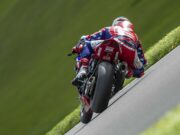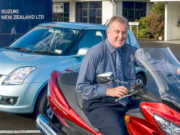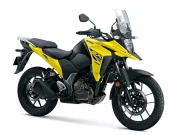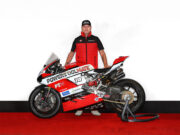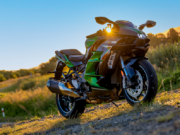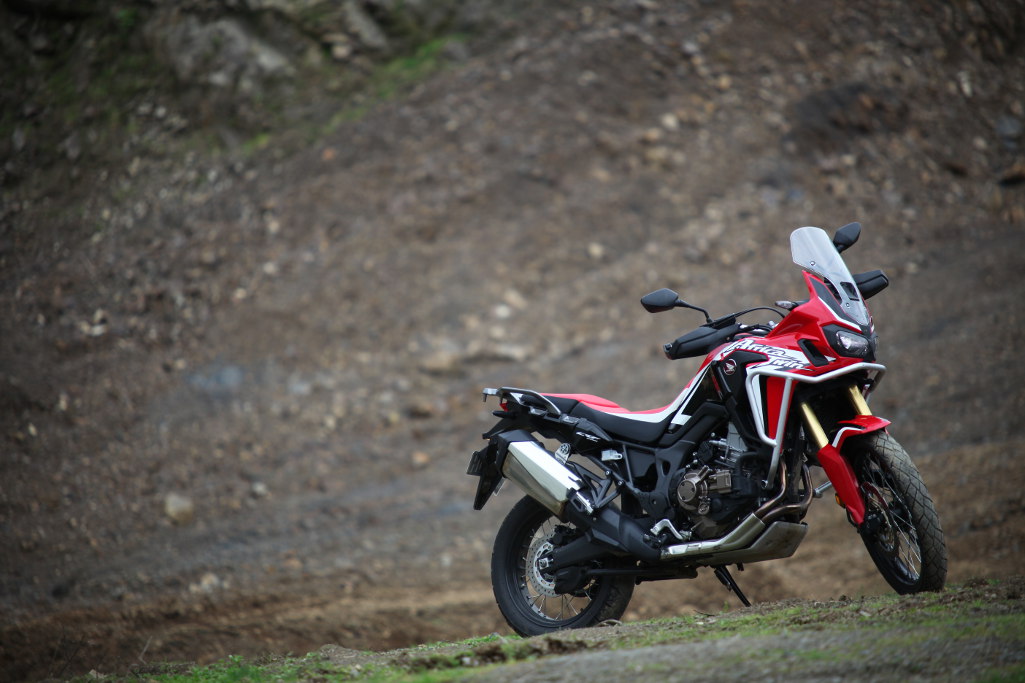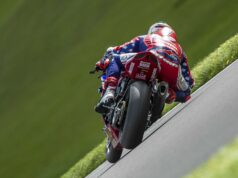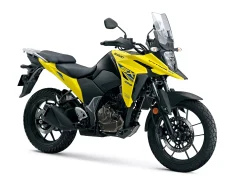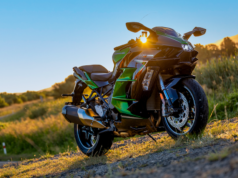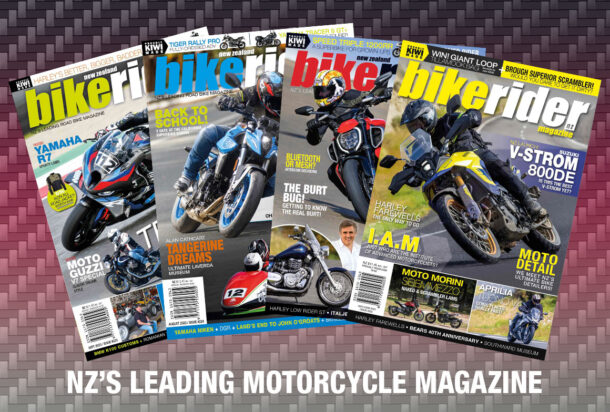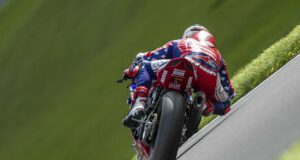As a former national trails and enduro champion, Greg Power is no slouch on any bike, which is why he was the perfect candidate to test the new Honda Africa Twin.
Words: Greg Power | Photos: Paul
When Paul suggested that I could have a ride the all new Africa Twin, I knew that we had to take it out to its natural environment, the Hauraki Plains. Sure, it’s not quite the African Savanna but it does encompass all the terrain you would expect in a New Zealand safari: sealed roads, gravel roads, forestry roads and off-road terrain.
As I owned both the 1988 Honda NX650 Dominator and 2001 Honda Transalp, I was curious to see how well the new generation of Honda adventure bike goes, so you could say that I was quite excited. Not only have ridden those two precursors, I’ve also ridden my mate’s original Africa Twin (that has over 200,000km on the clock), which I was keen to compare.
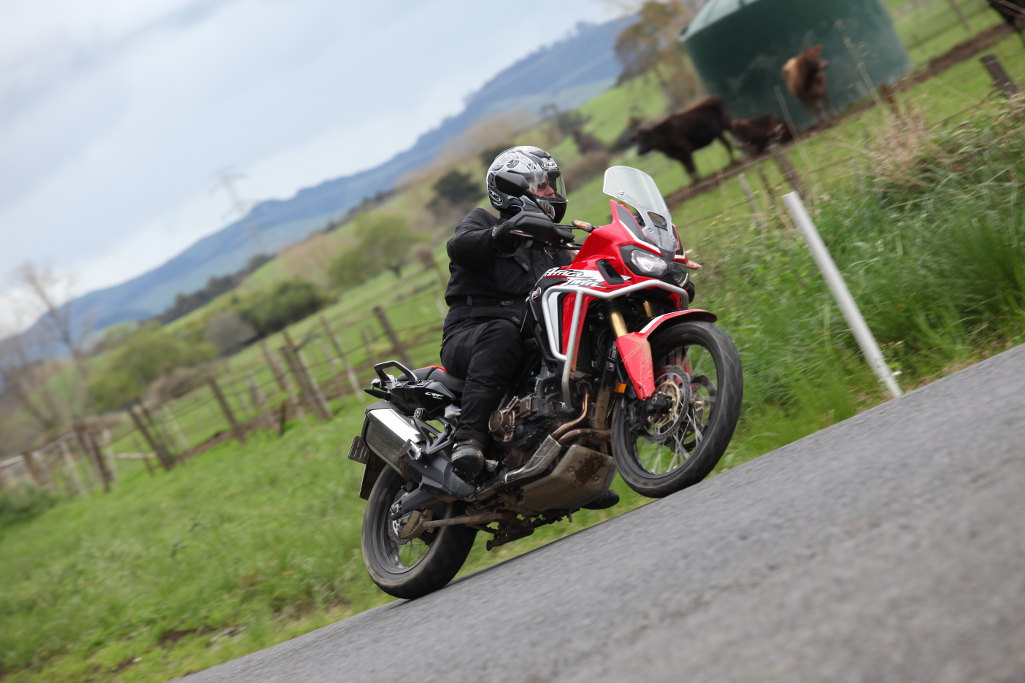 The ride started with the sealed road trip on various main and back roads on the way to Honda Park in Maramarua Forest. On the road, the handling is similar to my 2001 Transalp, which also has a 21-inch front wheel. The “roady” adventure tyres hugged the seal, making cornering stable and precise. Now, I’m no “tar baby” and the thought of dragging my knee is just that, a thought, so my idea of stable and precise cornering is not up to Paul’s superbike standard. However, for me, the Africa Twin did the business at speeds I prefer not to disclose in public. Really, the extra ponies in the vertical twin make my 650cc Translap feel very sedentary.
The ride started with the sealed road trip on various main and back roads on the way to Honda Park in Maramarua Forest. On the road, the handling is similar to my 2001 Transalp, which also has a 21-inch front wheel. The “roady” adventure tyres hugged the seal, making cornering stable and precise. Now, I’m no “tar baby” and the thought of dragging my knee is just that, a thought, so my idea of stable and precise cornering is not up to Paul’s superbike standard. However, for me, the Africa Twin did the business at speeds I prefer not to disclose in public. Really, the extra ponies in the vertical twin make my 650cc Translap feel very sedentary.
One we reached the gravel roads, I was in my element and so was the Honda. The traction control meant that the back letting go was virtually impossible and the ABS meant I couldn’t lock up the front with disastrous results. There is plenty of adjustment to enable you to play, though; and we did just that, spending the next couple of hours mucking about on the substandard forestry roads.
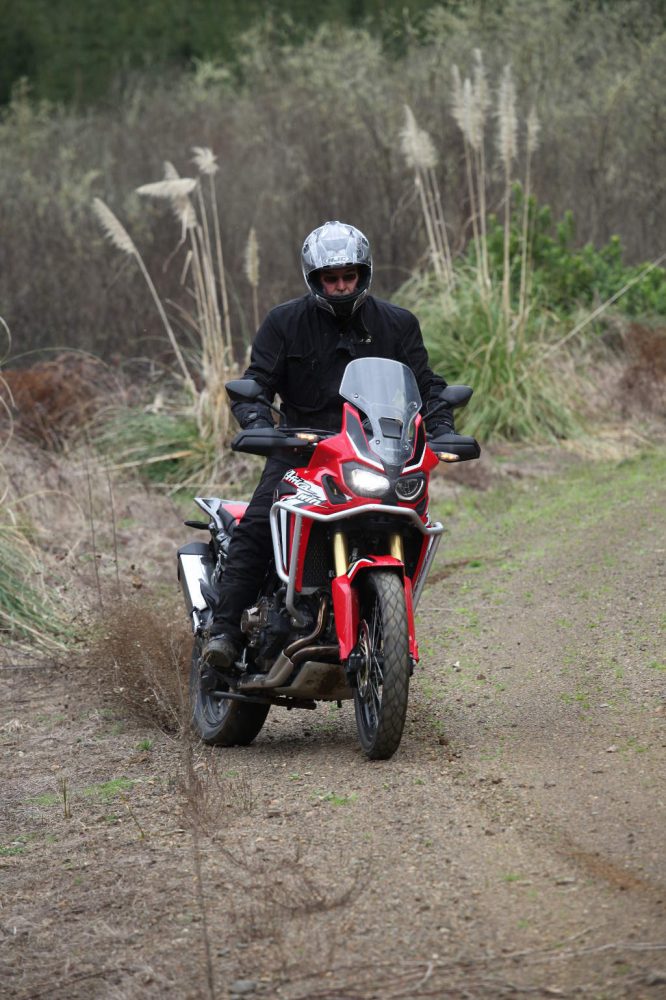 Paul is always keen for a decent pic and reckons that is why he employs my son Chris to do the wheelies and power slides for the photoshoots. Well, I wasn’t going to be out done by one who learnt all that from his dad was I? After several dismal attempts at a feet-up slide, Paul suggested we disengage the traction control that was kicking in every time I fed the throttle. Once we did that, it sure did light up. Almost uncontrollably, too, which is why I guess there is traction control for us mere mortals (and why we got a fairly good shot). But I was quick to turn the traction control back on. After some experimentation, I chose the lesser of the settings that let the rear wheel be used for a little steering control yet still active enough for the 1000cc not to get away on me completely. It was the same with the ABS, too. You can only turn off the rear ABS, which I did in the gravel, as I sometimes like to use the back brake to tip into a loose turn – it made the bike very controllable.
Paul is always keen for a decent pic and reckons that is why he employs my son Chris to do the wheelies and power slides for the photoshoots. Well, I wasn’t going to be out done by one who learnt all that from his dad was I? After several dismal attempts at a feet-up slide, Paul suggested we disengage the traction control that was kicking in every time I fed the throttle. Once we did that, it sure did light up. Almost uncontrollably, too, which is why I guess there is traction control for us mere mortals (and why we got a fairly good shot). But I was quick to turn the traction control back on. After some experimentation, I chose the lesser of the settings that let the rear wheel be used for a little steering control yet still active enough for the 1000cc not to get away on me completely. It was the same with the ABS, too. You can only turn off the rear ABS, which I did in the gravel, as I sometimes like to use the back brake to tip into a loose turn – it made the bike very controllable.
It was mostly fun and games, I did have one scary moment on the gravel, when I fed the throttle to see how the upper gear changes would feel. I looked up from the dash to see an off-camber corner coming up way too fast. It was there that the ABS did its duty and saved me the embarrassment of trying to rail the outside water table.
AUTOPILOT
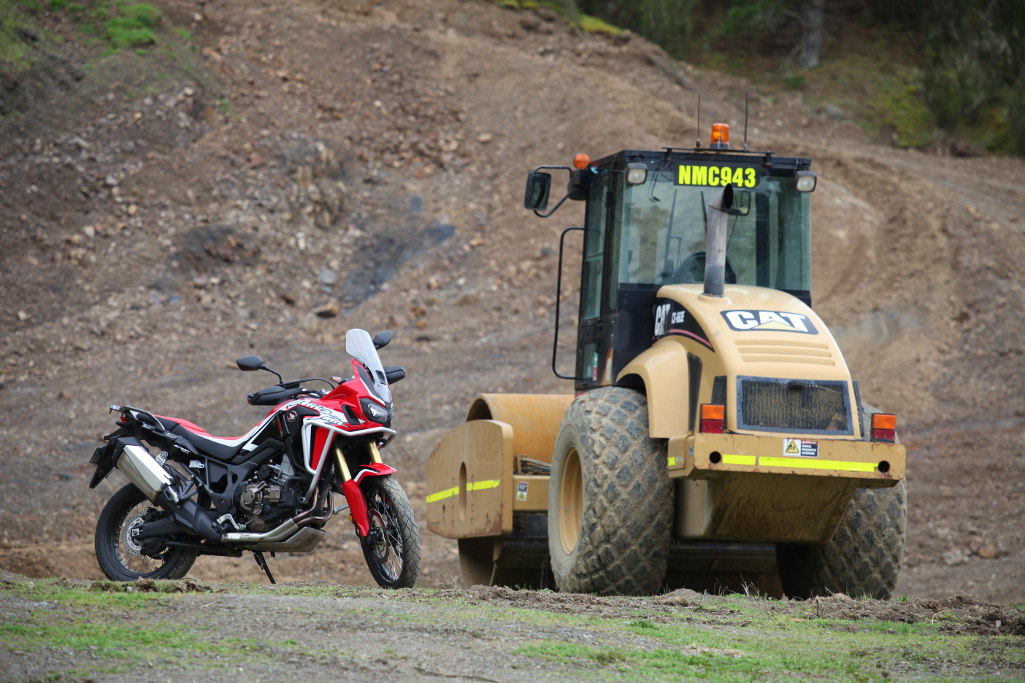 So, this is a new realm for adventure bikes, which Honda has done well. The red marque has adapted their dual-clutch to the Africa Twin engine and I love it. On the other hand, Paul is more of a superbike guy, one who prefers the left hand toggle switch to change gears. I have been riding Honda auto quads for many years and really love the auto shift function, which is where the Africa Twin got its from, actually.
So, this is a new realm for adventure bikes, which Honda has done well. The red marque has adapted their dual-clutch to the Africa Twin engine and I love it. On the other hand, Paul is more of a superbike guy, one who prefers the left hand toggle switch to change gears. I have been riding Honda auto quads for many years and really love the auto shift function, which is where the Africa Twin got its from, actually.
Now, when someone tells you an auto-change is seamless, you usually take it with a grain of salt. While it is really good, you can feel the nudge of the auto on my quad bikes. On the Africa Twin, I actually had to look at the gear indicator on the dash to see that it had changed – to say it is seamless is an understatement.
Speaking of the dash, one thing I wasn’t a fan of is the digital speedo, since it is too sensitive, flipping up and down, being quite distracting as you try to hold a smooth throttle. In the end, I just stopped looking at it and enjoyed the ride.
The handling is superb, with the centre of gravity seriously low, giving you slow speed stability required in tricky off-road situations. We rode over branches, mud patches, loose gravel, some rocks and puddles, all with confidence. We did all this with the standard road orientated tyres, too, so just imagine what it will do with pukka adventure tyres fitted.
When the Africa Twin was announced, I had dreams of rekindling my youth, buying one and going on the ultimate adventure. But I just couldn’t justify the expense of the upgrade from my Transalp, which is almost two decades old. Now, I’m having second thoughts…
PAUL’S PERSPECTIVE
With Kev spending five days in the South Island on the initial media launch and coming back with tales of endless gravel roads and epic riding, which showed the DVT model to be the darling of the range, I must admit, I still wasn’t convinced. But that’s not to say I hadn’t been looking forward to riding the latest Africa Twin. My experience with auto road bikes in years gone by hasn’t been exactly favourable, is all. But maybe, just maybe, the Africa Twin was going to be different…
Heading out on the open road for the first time and I was still having my doubts. Having it in full-auto was making the ride a bit dreary, with the shifts not gelling with where I would want them. Opening the throttle for a fast overtake would see the ‘box drop a couple of cogs, where I would usually kept it in the higher gear and use the torque for drive – and shifts mid-corner were getting on my nerves. Swapping to sport mode solved the shifting issues, with the auto still dropping gears for overtakes, but staying in that ratio for longer rather than shifting straight back up into a higher gear as soon as you rolled off. Holding onto the gears for longer certainly improved the ride for me, and obv,iously, you can go full-manual, but then if you’re going to do that, surely you’d buy the cheaper manual bike in the first place, right?
And then it all made sense, all of a sudden, simply by changing the circumstances. Heading into Maramarua Forest for a bit of off-road testing, the the Africa Twin really started to shine. This really took me by surprise, as this is the environment that big adventure bikes start to feel out of their comfort zone, but the opposite was true with the Africa Twin, which felt like it was no in its natural habitat.
The low centre of gravity is the first thing you notice, especially with the low saddle that gives you the confidence from being able to get both feet comfortably on the floor. The riding position when standing on the pegs is completely natural; and, suddenly, the lack of horsepower on the road (compared to the opposition) becomes an advantage as the Africa Twin doesn’t feel like it wants to fire you backwards into a drain every time you go near the throttle. And then there’s the electronics…
Standing on the pegs and gripping with your legs is one of the fundamental ways of controlling a bike off-road, so the less you need to move around, the more chances you’ve got of being able to keep said bike under control. Switching the Africa Twin into enduro mode sees the electronics change the braking preferences so you can lock the back wheel, while changing the traction control to the lowest of the three settings enables the Honda to slide, but just enough to help steer – it’ll pull the reigns in if it thinks your exuberance far exceeds your skill. And the final piece of the puzzle, putting the gearbox into manual mode.
Now, you can tackle gravel roads and trails on the Africa Twin at maximum attack without the worry of having to move your position on the pegs. Flicking up and down the gearbox with jabs on the buttons beneath the lefthand bar sees the Honda seamlessly shifting to the next ratio, giving you low revs and torque if you like or high revs if you want to hold onto ratios. With the ABS still working on the front-end, confidence into corners is high with the electronic safety net there to catch out any lever heavy-handedness, while a quick jab with the rear brake is the only thing your feet need to do. The pegs do a great job of giving grip, while that low saddle means the Africa Twin allows you to move around in the standing position like you’re on a much smaller machine.
When heading out of the park after doing photos, I had a totally new appreciation of the Africa Twin and the automatic version. If I had the choice, this is the model that I would opt for. Okay, it feels a little different on the road, but that’s something you’d probably adapt to and you’d learn to get the most out of the automatic as you spent more time riding the big Honda. But, off-road, the Africa Twin is a revelation. When it comes to this bike adventure bikes, it simply feels more agile and capable than any other big adventure machine, once you head off the beaten track.
2016 HONDA AFRICA TWIN SPECS
| Engine Type: | 998cc liquid-cooled four-stroke parallel twin |
| Bore and Stroke: | 92mm x 75.1mm |
| Transmission: | Constant mesh 6-speed manual / 6-speed DCT with on and off-road riding modes |
| Clutch: | Wet, multi-plate with coil springs, aluminum cam assist and slipper clutch |
| Frame: | Steel semi-double cradle type with high-tensile strength steel rear sub-frame |
| Front Brake: | 310mm dual wave floating hydraulic disc with aluminum hub and radial fit 4-piston calipers and sintered metal pads |
| Rear Brake: | 256mm wave hydraulic disc with 2-piston caliper and sintered metal pads. Also Lever-Lock Type Parking Brake System on DCT model |
| Length: | 2335mm |
| Width: | 875mm |
| Height: | 1475mm |
| Wheelbase: | 1575mm |
| Seat Height: | 871mm |
| Ground Clearance: | 250mm |
| Fuel Capacity: | 18.7L |
| Dry Weight: | 228kg (base model) | 231.7kg (ABS/TC) | 242kg (DCT/ABS/TC) |



